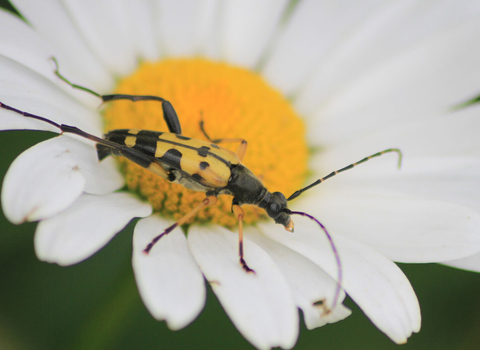
Black-and-yellow longhorn beetle © Tom Hibbert
Black-and-yellow longhorn beetle © Tom Hibbert
Black-and-yellow longhorn beetle
This brightly-coloured beetle is often found feeding on flowers on warm days in late spring and summer.
Scientific name
Rutpela maculataWhen to see
May to AugustAbout
The black-and-yellow longhorn is a fairly large and colourful beetle. It's a common sight across most of Europe and is widespread in the UK. As the name suggests, it's black and yellow with very long antennae - it doesn't really have horns! These beetles are usually found in areas close to woodland, where there is plenty of dead wood for their larvae to feed on.The adult beetles can be spotted between May and August. They're most active in warm weather, when they visit a wide range of flowers to feed on pollen and nectar. They're particularly fond of umbellifers like cow parsley and hogweed. After mating, females lay their eggs on fallen trees and branches, or rotting stumps. The larvae live within the wood, feeding on it, for two or three years. After pupating and emerging from the wood as adult beetles, they only live for a few more weeks.
